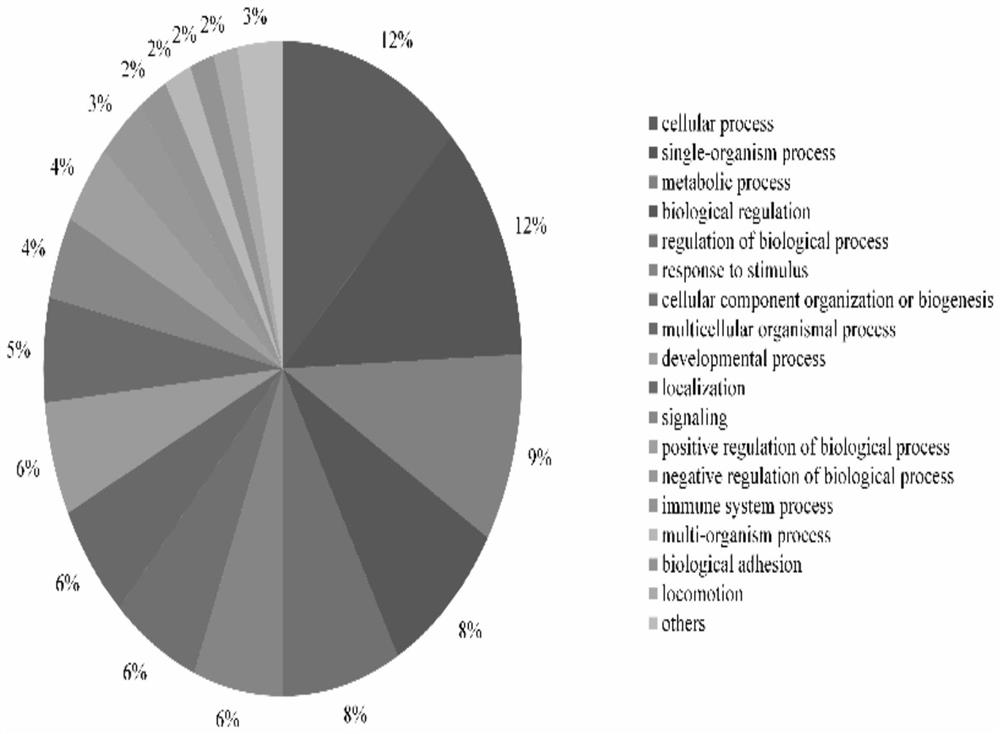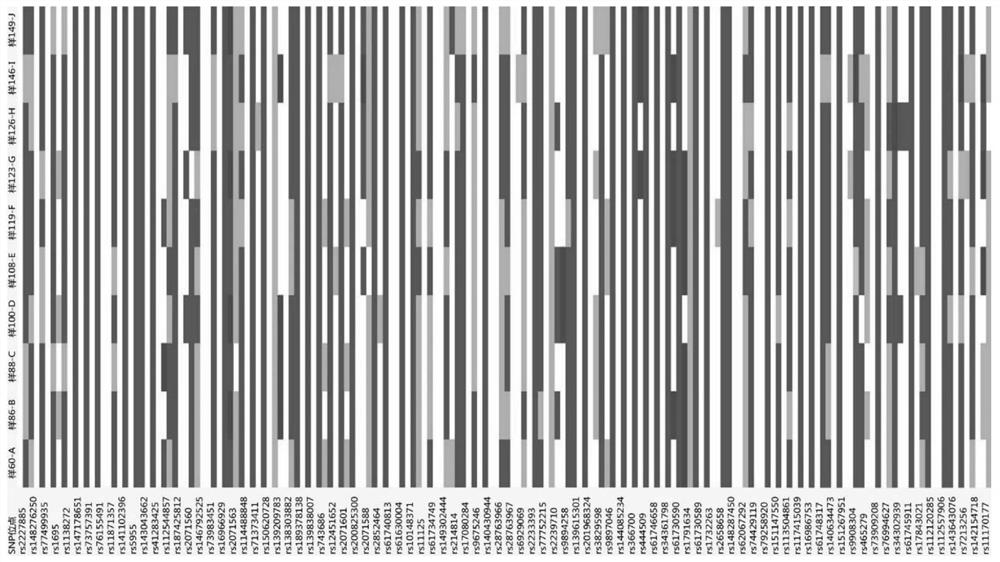A method for population origin inference based on hair shaft proteome nssnp
A technology of people and matter, applied in the field of biology
- Summary
- Abstract
- Description
- Claims
- Application Information
AI Technical Summary
Problems solved by technology
Method used
Image
Examples
Embodiment 1
[0040] Example 1. Acquisition of nsSNPs in the hair shaft proteome
[0041] 1. Extraction of hair shaft proteome and detection of proteome by mass spectrometry
[0042] 1. Collection of samples
[0043] The hair shaft samples of 104 Chinese Han and 105 unrelated Uyghur individuals and 209 corresponding oral swabs were collected. The hair shaft samples were cut from the head and tail of the hair to ensure that there were no hair follicles and hair tails. Each hair shaft The sample is 2cm long (two homologous hair shafts are used when the length of a single hair is less than 2cm).
[0044] 2. Hair shaft proteome extraction
[0045] To extract the hair shaft proteome from the hair shaft sample, the specific steps are as follows: wash the hair shaft twice with 10% (volume fraction) methanol and water for 1-2 hours each time, then take out the washed hair shaft and chop it to about 1 -2mm. 100 μL of protein treatment solution (1M urea, 50mM NH) was added to each part of the min...
Embodiment 2
[0080] Example 2. Application of nsSNP site combination (527) in population inference
[0081] 1. Evaluation of nsSNP loci combinations (527) based on 1000 Genomes data
[0082] 1. Principal Component Analysis (PCA)
[0083] Principal Component Analysis (PCA) was performed using Rv3.2.3 software for 27 populations and 2504 samples in the three regions of Africa, East Asia and Europe in the 1000 Genomes Database in Table 1 using 527 nsSNP site combinations. Principal component analysis is used to reduce the dimension of the data, and multiple measured variables with strong correlation are integrated into a small number of comprehensive variables.
[0084] The result is as Figure 4 shown. As can be seen from the figure: Principal Component 1 (PC1) and Principal Component 2 (PC2) explain the difference of 60.5. The combination of 527 nsSNP loci can effectively distinguish the three populations of Africa, East Asia and Europe.
[0085] 2. Cluster analysis
[0086] A total o...
PUM
 Login to View More
Login to View More Abstract
Description
Claims
Application Information
 Login to View More
Login to View More - R&D
- Intellectual Property
- Life Sciences
- Materials
- Tech Scout
- Unparalleled Data Quality
- Higher Quality Content
- 60% Fewer Hallucinations
Browse by: Latest US Patents, China's latest patents, Technical Efficacy Thesaurus, Application Domain, Technology Topic, Popular Technical Reports.
© 2025 PatSnap. All rights reserved.Legal|Privacy policy|Modern Slavery Act Transparency Statement|Sitemap|About US| Contact US: help@patsnap.com



